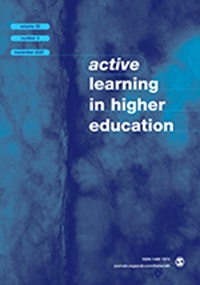教师课程评估和班级规模
IF 3.8
1区 教育学
Q1 EDUCATION & EDUCATIONAL RESEARCH
引用次数: 1
摘要
教员的表现在培养学生学习方面起着至关重要的作用。与中学后教育不同,美国许多州在p-12教育系统中对班级规模进行了大幅监管,目的是提高学习质量。因此,本研究论文的目的是研究高等教育机构教师评估与班级规模之间的相关性,因为研究结果可以为有关高等教育机构班级规模的监管决策提供信息。该研究回顾了2019年秋季从中西部大学获得的97项课程评估。考虑了学生在物理和虚拟课堂上对教师表现的反馈。研究中包括的不同课程评估包括兼职教师、全职教师、研究生水平和本科生水平的课程评估。研究结果显示,班级规模和教师评价之间存在负相关,认为教师在小班的教学方式与在大班的教学方式相同。尽管如此,研究结果表明,与传统的面对面课堂相比,传统虚拟课堂的规模与课程表现的相关性较低。在后者中,教师和学生之间的参与度更高,因为后者似乎比在线课堂更活跃。新冠肺炎的技术效应 随着网络学习的兴起,网课的人口规模也发生了变化。因此,考虑到用于研究的数据是在新冠肺炎之前收集的,未来的研究必须相当关注虚拟课堂的评估质量,以帮助将学校预算分配用于在线学习。本文章由计算机程序翻译,如有差异,请以英文原文为准。
Faculty course evaluations and class size
Instructor performance plays a critical role in fostering student learning. Unlike the postsecondary level, many states in the United States, have substantially regulated class size in the p-12 education system with the aim of enhancing quality learning. Thus, the purpose of this research paper is to examine the correlation between instructor evaluations and class size in tertiary institutions as the findings can inform regulatory decisions regarding class sizes in postsecondary facilities. The study reviewed 97-course evaluations garnered in the Fall of 2019 from a Midwest University. The feedback of students, undertaking physical, and virtual classes, was considered regarding teachers’ performance. Different course evaluations included in the study were adjunct faculty, full-time faculty, graduate level, and undergraduate level course assessments. The research findings depicted a negative correlation between class size and instructor evaluation, positing that teachers teach the same way in smaller classes as they do in larger classes. Nonetheless, the study results showed that the sizes of conventional virtual classes had a lower correlation with course performances compared to traditional face-to-face classes. In the latter, there was more engagement between teachers and students, as the latter appeared to be more active than in online classes. With the technological effect that Covid-19 has brought forth in online learning, population sizes of online classes have changed. Therefore, considering the data used for the research was collected preCovid-19, it is essential that future studies pay considerable focus on the quality of evaluation of virtual classes to help with directing of school budget allocations toward online learning.
求助全文
通过发布文献求助,成功后即可免费获取论文全文。
去求助
来源期刊

Active Learning in Higher Education
EDUCATION & EDUCATIONAL RESEARCH-
CiteScore
13.20
自引率
12.00%
发文量
31
期刊介绍:
Active Learning in Higher Education is an international, refereed publication for all those who teach and support learning in higher education (HE) and those who undertake or use research into effective learning, teaching and assessment in universities and colleges. The journal is devoted to publishing accounts of research covering all aspects of learning and teaching concerning adults in higher education. Non-discipline specific and non-context/country specific in nature, it comprises accounts of research across all areas of the curriculum; accounts which are relevant to faculty and others involved in learning and teaching in all disciplines, in all countries.
 求助内容:
求助内容: 应助结果提醒方式:
应助结果提醒方式:


